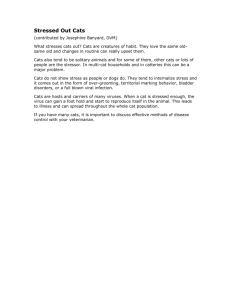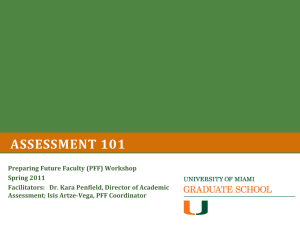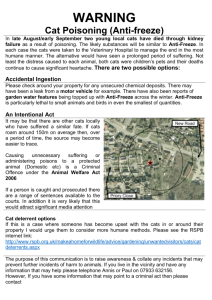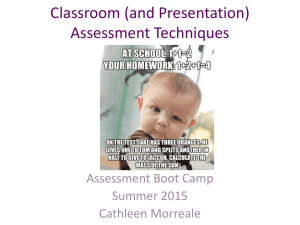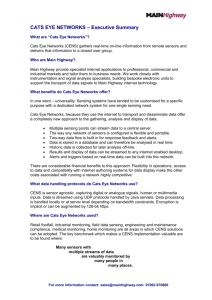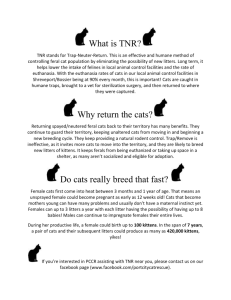EarlyAlertAssessment
advertisement
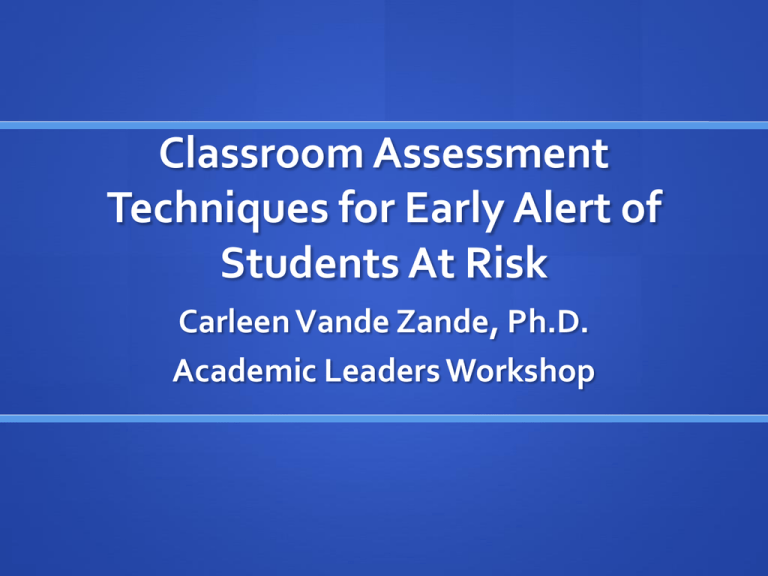
Classroom Assessment Techniques for Early Alert of Students At Risk Carleen Vande Zande, Ph.D. Academic Leaders Workshop Assessment for Early Alert "Assessing for learning is a process of inquiry into what and how well students learn.” Peggy Maki Types of Assessments Formative Summative Purpose-ongoing Purpose-final Uses-feedback Uses-final Benefits-correct outcome Benefitssummarize learning misconceptions Classroom Assessment Techniques as Formative What are they? Formative in nature Speedy Flexible Learning activities for students What can CATs measure? Course-related knowledge and skills Student attitudes, values and self- awareness Reactions to instruction methods How can CATs influence teaching and learning? Provide frequent feedback Provide useful information about what students have learned or misunderstood Address misconceptions in a timely way Assist student to self-assess Immediate feedback when it is still possible to make mid-course corrections Lower investment of time to gain useful information about student learning 1. One-Minute Paper During last few minutes of class, ask students to do a quick-write “The most important thing I learned today and/or what I understood least.” Instructor reviews before next class and can clarify, correct, or elaborate in beginning of next class. 2. Focused Listing A brainstorming technique where you ask students to generate words or phrases that describe a concept Can be used for discussion, review, assessment of prior knowledge. 3. Pro/Con Grid Quick Analysis of pros/cons, advantages/disadvantages of a concept or issue. Forces students to see many sides of a concept/issue. Pro and Con Grid Please list the advantages and disadvantages of using CATs in your instruction. Advantages of CATS Disadvantages of CATS 10 4. Analytic Memo Students write a 1-2 page analysis of a specific problem or issue for a specific audience. Students need to analyze and can then make decisions or solve problems. 5. Concept Maps Students draw a map connecting the major topic with features, ideas and concepts they have learned. Basis for review, discussion, overview of topic. Good check for understanding. 6. Podcasting Problem Solving Create a podcast of students solving a problem or talking through a process. Ask them to review for self-evaluation or you can review for thinking errors. 7. Problem Recognition Present students with scenarios and ask them to identify the issue/problem. Students identify what principle, theory, technique is used to solve the problem. 8. Direct Paraphrasing Ask students to relate what they have just learned geared to a specific audience. Assesses student ability to comprehend and transfer concepts. Directed Paraphrasing Directions: In no more than 1-2 concise sentences, define what learning is. Write a definition that will make sense to your colleagues. But try, at the same time, to go beyond the (hohum) obvious and give them something to think about. Learning is. . . ____________________________________________ ____________________________________________ ____________________________________________ ____________________ 16 9. One-sentence summary Students summarize knowledge of a topic by constructing a single sentence. This requires students to select only the defining features of an idea. One Sentence Summary Directions: To create a one-sentence summary, 1st answer all of the questions below in relation to your topic. Then weave your separate answers into 1 (or 2) summary sentences. Topic: ___________________________ Who? Does/Did/Will Do What? To/For Whom/What? How? When? Where? Why? 18 10. Application Cards After teaching a theory or procedure ask students to write down at least one application for what they have just learned. Shows if students can transfer information or if they understand the concept. Applications Card Directions: Please take a moment to recall the ideas, techniques, and strategies we’ve discussed—and those you’ve thought up—to this point in the session. Quickly list as many possible applications as you can. Don’t censor yourself! These are merely possibilities. You can always evaluate the desirability and/or feasibility of these application ideas later. Some Possible Applications of those Ideas/Techniques to My Work Interesting Ideas/ Techniques from this Session 20 11. Documented Problems Ask students to solve a problem and document the steps they took to do that work. This will highlight thinking steps, misconceptions. 12. Application Article During last 15 minutes of class, ask students to write about how a major point applies to a real-world situation or how the point applies to their major. Share examples in next class to illustrate range of applications, depth of understanding, creativity. Follow-up Questions Which have the most potential for your course? Should they be graded? All ? Some? Keep it simple Let students know what you are doing Recommendations for Use of CATs Collect, sort and analyze the data looking for patterns What did you observe? What is your next step? Share observations with students Begin slowly…don’t force fit activity


